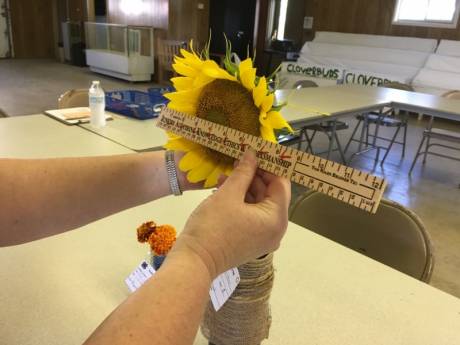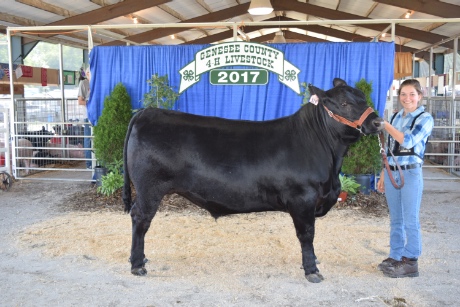Public comment welcome on draft plan for chronic wasting disease in State's deer population
Press release:
New York State Department of Environmental Conservation Commissioner Basil Seggos recently announced the release of a draft New York State Interagency CWD Risk Minimization Plan for public comment.
The plan describes proposed regulatory changes and actions that DEC will take to minimize the risk of Chronic Wasting Disease (CWD) entering or spreading in New York. It was designed to protect both wild white-tailed deer and moose, as well as captive cervids including deer and elk held at enclosed facilities.
DEC biologists worked with the State’s Department of Agriculture and Markets veterinarians and wildlife health experts at Cornell University to craft a comprehensive set of steps that are the most advanced CWD prevention strategies in the nation.
"New York is leading the way in protecting our valuable deer and moose herds," Seggos said. "Not only does this horrible disease kill animals slowly, but wild white-tailed deer hunting represents a $1.5 billion industry in the state.
"Our CWD Risk Minimization Plan is in the best interest of all of us who care about wildlife and especially about the health of our wild white-tail deer herd. Gov. (Andrew) Cuomo's commitment to high-quality hunting opportunities in New York also supports our taking action now to prevent a serious problem down the road."
Disease prevention is the only cost-effective way to keep CWD out of New York. Together with the State Department of Agriculture and Markets, New York is using cutting-edge science and common sense to ensure that everything possible is done to protect the state's herds from CWD.
"The Department's veterinarians and licensed veterinary technicians were responsible for the early detection of New York's only CWD incident and played critical roles in the response to the discovery of CWD in 2005,” said State Agriculture Commissioner Richard A. Ball.
“Our staff continue to work hard to control the risk of this serious disease and maintain our early detection system. This plan will further support these efforts to protect our wildlife."
CWD, an always fatal brain disease found in species of the deer family, was discovered in Oneida County’s wild and captive white-tailed deer in 2005. More than 47,000 deer have been tested statewide since 2002, and there has been no reoccurrence of the disease since 2005. New York is the only state to have eliminated CWD once it was found in wild populations. In North America, CWD has been found in 24 states, including neighboring Pennsylvania and Ohio, and two Canadian provinces.
CWD was first identified in Colorado in 1967 and is caused by infectious prions, which are misfolded proteins that cannot be broken down by the body's normal processes. They cause holes to form in the brain. Prions are found in deer parts and products including urine and feces; they can remain infectious in soil for years and even be taken up into plant tissues. It is in the same family of diseases, transmissible spongiform encephalopathies, as "mad cow" disease in cattle.
Millions of cattle were destroyed because of mad cow disease in England and Europe in the 1990s and the disease also caused a fatal brain condition in some humans that ate contaminated beef products. Although there have been no known cases of CWD in humans, the Centers for Disease Control recommends that no one knowingly eat CWD-positive venison.
The proposed plan would streamline operations between DEC and the State Department of Agriculture and strengthen the state's regulations to prevent introduction of CWD.
Some examples of the proposed changes include:
• Prohibit the importation of certain parts from any CWD-susceptible cervid taken outside of New York. Require that these animals be deboned or quartered and only the meat, raw hide or cape, and cleaned body parts, such as skull cap, antlers, jaws, and teeth, or finished taxidermy mounts be allowed for import into the state;
• Prohibit the retail sale, possession, use, and distribution of deer or elk urine and any products from CWD-susceptible animals that may contain prions, including glands, or other excreted material while allowing New York captive cervid facilities to continue to export deer urine outside of the State;
• Maintain and reinforce the prohibition on the feeding of wild deer and moose in New York State;
• Provide DEC Division of Law Enforcement the necessary authority to enforce Department of Agriculture and Market's CWD regulations;
• Explore possible penalties or charges to defray costs associated with the removal of escaped cervids from the environment or the response to disease outbreaks;
• Require all taxidermists and deer processors (people who butcher deer for hire) to dispose of cervid waste and waste byproducts in compliance with 6 NYCRR Part 360, such as in a municipal landfill;
• Promotion of improved fencing methods for captive cervids to further prevent contact with wild deer or moose;
• Partner with the State Department of Agriculture and Markets to enhance captive cervid testing while continuing DEC's rigorous surveillance testing in hunter-harvested deer;
• Improve record keeping and data sharing between departments through joint inspections of captive cervid facilities, electronic reporting, and animal marking;
• Improve handling requirements, record keeping, and disease testing of wild white-tailed deer temporarily held in captivity for wildlife rehabilitation; and
• Develop a communication plan and strategy to re-engage stakeholders, including captive cervid owners and the public, in CWD risk minimization measures and updates on CWD research.
The New York State Interagency CWD Risk Minimization Plan has had extensive outreach and vetting by sporting groups in the state to address the concerns of myriad stakeholders while maintaining the strength of purpose to protect the public and the environment. The plan updates reporting requirements, improves communication to stakeholders, and simplifies regulations to reduce confusion while protecting our natural resources.
The draft plan is available for public review on the DEC website.
Written comments on the draft plan will be accepted through Sept. 1. Comments can be submitted via email at wildlife@dec.ny.gov, subject: CWD Plan or by writing to NYSDEC, Bureau of Wildlife, 625 Broadway, Albany 12233-4754.











